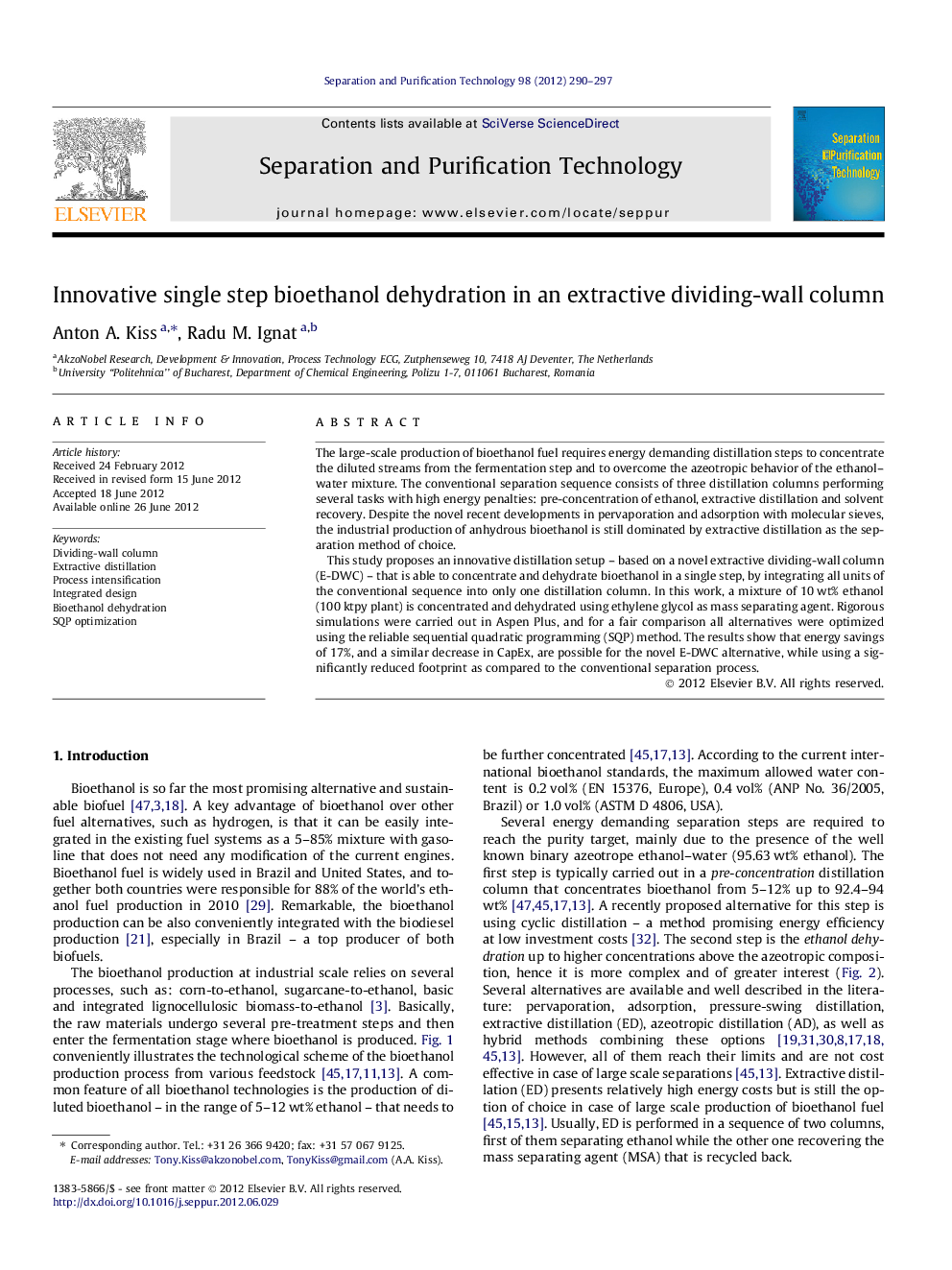| Article ID | Journal | Published Year | Pages | File Type |
|---|---|---|---|---|
| 642033 | Separation and Purification Technology | 2012 | 8 Pages |
The large-scale production of bioethanol fuel requires energy demanding distillation steps to concentrate the diluted streams from the fermentation step and to overcome the azeotropic behavior of the ethanol–water mixture. The conventional separation sequence consists of three distillation columns performing several tasks with high energy penalties: pre-concentration of ethanol, extractive distillation and solvent recovery. Despite the novel recent developments in pervaporation and adsorption with molecular sieves, the industrial production of anhydrous bioethanol is still dominated by extractive distillation as the separation method of choice.This study proposes an innovative distillation setup – based on a novel extractive dividing-wall column (E-DWC) – that is able to concentrate and dehydrate bioethanol in a single step, by integrating all units of the conventional sequence into only one distillation column. In this work, a mixture of 10 wt% ethanol (100 ktpy plant) is concentrated and dehydrated using ethylene glycol as mass separating agent. Rigorous simulations were carried out in Aspen Plus, and for a fair comparison all alternatives were optimized using the reliable sequential quadratic programming (SQP) method. The results show that energy savings of 17%, and a similar decrease in CapEx, are possible for the novel E-DWC alternative, while using a significantly reduced footprint as compared to the conventional separation process.
Graphical abstractFigure optionsDownload full-size imageDownload as PowerPoint slideHighlights► One step bioethanol concentration and dehydration in an extractive dividing-wall column. ► Energy efficient anhydrous bioethanol production in an integrated 3-in-1 distillation unit. ► Ethanol dehydration (from 10 to 99.8%wt) using ethylene glycol as mass separating agent. ► Energy savings of 17% with similar reduction in capital investment costs. ► Rigorous simulations, sensitivity analysis and optimization performed in Aspen Plus.
